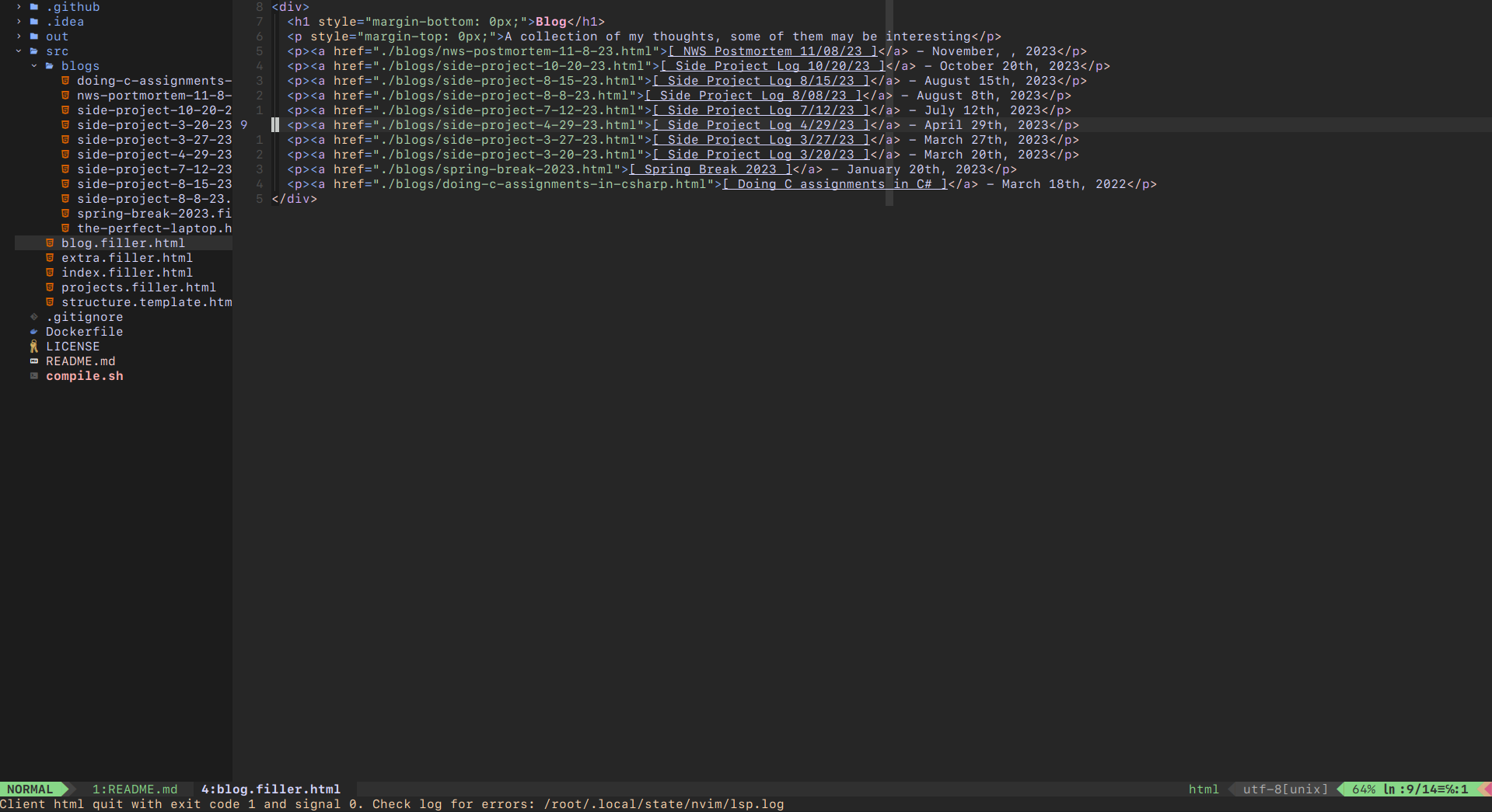This side project log covers work done from 8/15/2023 - 10/20/2023
Anthracite is a web server written in C++. The site you're reading this on right now is hosted on Anthracite. I wrote it to deepen my knowledge of C++ and networking protocols. My main focus of Anthracite is performance. While developing anthracite, I have been exploring different optimization techniques and benchmarking Anthracite against popular web servers such as NGINX and Apache. Anthracite supports HTTP/1.1 and only supports GET requests to request files stored on a server.
Anthracite currently performs on par with NGINX and Apache when making 1000 requests for a 50MB file using 100 threads in a Docker container. To achieve this performance, I used memory profilers to find out what caused large or repeated memory copies to occur. I then updated those sections of code to remove or minimize these copies. I also made it so that Anthracite caches all files it can serve in memory. This avoids unnecessary and costly disk reads. The implementation of this is subpar, as it requires that the server be restarted whenever the files it is serving are changed for the updates to be detected by Anthracite.
I intend to make further performance improvements, specifically in the request parser. I also plan to implement HTTP/2.0.
YACEMU is an interpreter for the CHIP-8 instruction set written in C. My main goal when writing it was to gain more insight into how emulation works. I had previous experience with this from when I worked on an emulator for a slimmed-down version of X86 called Y86. So far, I've been able to get most instructions working. I need to work on adding input support so that users can interact with programs running in yacemu. It has been fairly uncomplicated and easy to write thus far. After I complete it, I would like to work on an emulator for a real device such as the GameBoy (This might be biting off more than I can chew).
Over the summer while I was interning, I began using VIM as my primary text editor. I used a preconfigured version of it (NvChad) to save time, as setting everything up can take a while. After using it for a few months, I began making my own configuration for VIM, taking what I liked from NvChad and leaving behind the parts that I didn't like as much.

One important part of Nick VIM was ensuring that it was portable between different machines. I wanted the machine to have as few dependencies as possible so that I could get NickVIM set up on any computer in a couple of minutes. This will be especially useful when working on my School's lab machines and when switching to new computers in the future. I achieved this by dockerizing Nick VIM. This is based on what one of my co-workers does with their VIM setup. The Docker container contains all the dependencies for each language server. Whenever you edit a file with Nick Vim, the following script runs:
echo Starting container...
cur_dir=`pwd`
container_name=${cur_dir////$'_'}
container_name="${container_name:1}_$RANDOM"
docker run --name $container_name --network host -e DISPLAY=$DISPLAY -v /tmp/.X11-unix:/tmp/.X11-unix --mount type=bind,source="$(pwd)",target=/work -d nick-vim &> /dev/null
echo Execing into container...
docker exec -w /work -it $container_name bash
echo Stopping container in background...
docker stop $container_name &> /dev/null &
This code creates a new container, forwards the host's clipboard to the container, and mounts the current directory inside the container for editing.
Secane was a simple ChatGPT wrapper that I wrote to practice for the behavioral part of job interviews. It takes your resume, information about the company, and information about the role you're interviewing for. It also integrates with OpenAI's whisper, allowing you to simulate talking out your answers. I made it with Next.JS.
These projects had minimal/no work done on them: NWS, RingGold, SQUIRREL
These projects I will no longer be working on: Olney